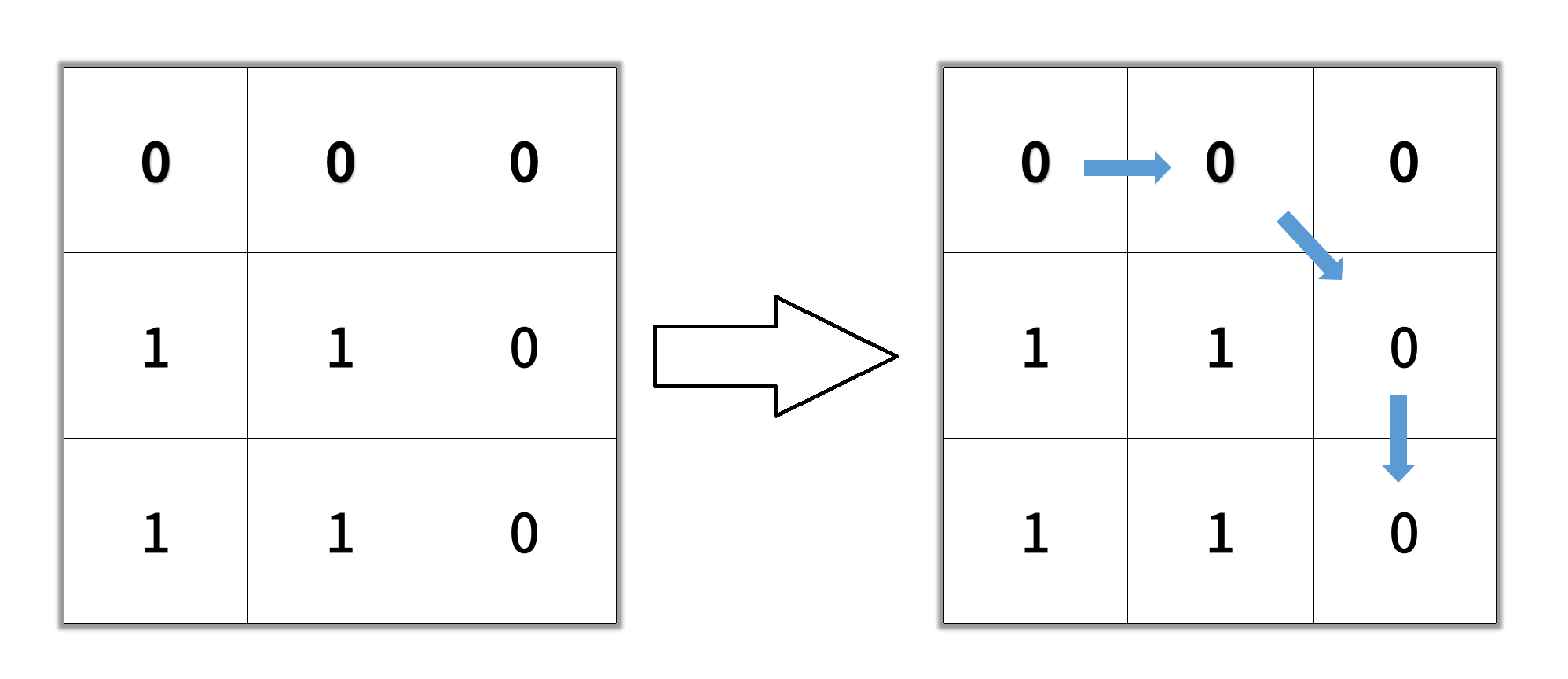LeetCode-in-Java
1091. Shortest Path in Binary Matrix
Medium
Given an n x n binary matrix grid, return the length of the shortest clear path in the matrix. If there is no clear path, return -1.
A clear path in a binary matrix is a path from the top-left cell (i.e., (0, 0)) to the bottom-right cell (i.e., (n - 1, n - 1)) such that:
- All the visited cells of the path are
0. - All the adjacent cells of the path are 8-directionally connected (i.e., they are different and they share an edge or a corner).
The length of a clear path is the number of visited cells of this path.
Example 1:

Input: grid = [[0,1],[1,0]]
Output: 2
Example 2:

Input: grid = [[0,0,0],[1,1,0],[1,1,0]]
Output: 4
Example 3:
Input: grid = [[1,0,0],[1,1,0],[1,1,0]]
Output: -1
Constraints:
n == grid.lengthn == grid[i].length1 <= n <= 100grid[i][j] is 0 or 1
Solution
import java.util.LinkedList;
import java.util.Queue;
public class Solution {
private int[] directions = new int[] {0, 1, 1, 0, -1, 1, -1, -1, 0};
public int shortestPathBinaryMatrix(int[][] grid) {
int m = grid.length;
int n = grid[0].length;
if (grid[0][0] == 1 || grid[m - 1][n - 1] == 1) {
return -1;
}
int minPath = 0;
Queue<int[]> queue = new LinkedList<>();
queue.offer(new int[] {0, 0});
boolean[][] visited = new boolean[m][n];
visited[0][0] = true;
while (!queue.isEmpty()) {
int size = queue.size();
for (int i = 0; i < size; i++) {
int[] curr = queue.poll();
if (curr[0] == m - 1 && curr[1] == n - 1) {
return minPath + 1;
}
for (int j = 0; j < directions.length - 1; j++) {
int newx = directions[j] + curr[0];
int newy = directions[j + 1] + curr[1];
if (newx >= 0
&& newx < n
&& newy >= 0
&& newy < n
&& !visited[newx][newy]
&& grid[newx][newy] == 0) {
queue.offer(new int[] {newx, newy});
visited[newx][newy] = true;
}
}
}
minPath++;
}
return -1;
}
}

